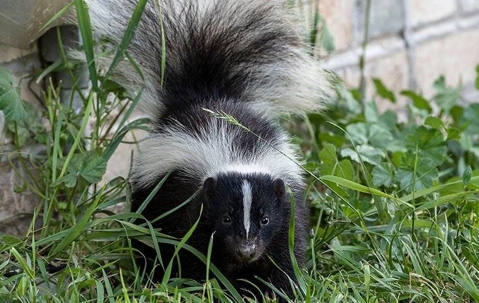The phrase “pest remediation” usually evokes thoughts of bugs. Animals are hardly ever thought about in that realm, but they should be. They are as much of a threat as insects. It’s not uncommon for them to walk into residential and urban sectors. This is especially expected when a Waltham home or business is in close proximity to a body of water, the woods, or a grassland.
Humans have to be cautious around wildlife. Most can bite, scratch, or transmit an awful disease. Research has shown that these creatures can pass along or trigger conditions like histoplasmosis, Lyme disease, West Nile virus, and rabies. If nothing else, they can destroy your property or personal belongings. By taking the time to do some reading, you can learn about local wildlife and how you can prevent them with Assurance Pest Solutions.
What Wildlife Are Common in Waltham? What Are the Dangers?
Skunks, voles, squirrels, and raccoons are pretty common wildflife in the area. Skunks are about 1 to 3 feet long. Their elongated bodies are stabilized by four legs and covered in two-tone fur. Many are black and white, while others are brown and gray. No matter the shading, they have stripes. Insects, plant material, and berries are among the things they’ll consume. They really don’t have any limits though. Yards get wrecked by their digging. Garages and basements are where they’ll hide if they get indoors. When they feel threatened, they’ll release a foul-smelling spray. Skunks have been tied to distemper and histoplasmosis.
Voles weigh about 2.5 ounces and are 3 to 5 inches long when fully developed. Their frames are bulky and hairy, with brown or black fur. They too have four legs. You might notice them by their blunted noses, round ears, and short tails. Their feeding and burrowing activities damage lawns, trees, vegetation, and crops.
Squirrels can grow to be 20 inches long. Their bushy tails alone can be 9 inches. Color-wise, they vary from yellow, brown, gray, white, and red. While their hair is short, it’s dense. Their features include tiny ears, beady eyes, pointed heads, and four legs. Nests might be found in attics and chimneys. Siding, insulation, and wiring will likely be harmed.
Raccoons are fat, 3 foot long animals. They have profuse black or brown hair, and unique black marks near their eyes that resemble a mask. Also, there are black circles on their disheveled tails. Similar to squirrels, they’ll settle in chimneys, attics, and under patios. Your gardens, garbage cans, and shingles won’t be spared by them.
Additional wildlife risk factors are:
- Intestinal roundworms
- Tularemia
- Salmonella
- Ticks and fleas
What Can Be Done to Prevent Wildlife?
- To reduce the chances of interactions with wildlife, do the following:
- Patch up openings in foundations, windows, doors, utilities, and roof lines.
- Place sweeps on all exterior doors.
- Sit trash in a container with a tight lid.
- Have a fence installed made of wire mesh or hardware cloth. It must have a curved bottom.
- Get organic debris off of the yard.
- Regularly mow the lawn.
- Trim plants and flowers on a routine basis, and distance them from the property.
- Use baskets netted pots and raised planter beds for greenery.
- Put down gravel or mulch around your property's perimeter.
How Will Assurance Pest Solutions Handle Wildlife?
The humane methods we employ at Assurance Pest Solutions for wildlife involve one-way eviction devices and live trapping. These avenues are fashioned to remove unwanted animals from your land and keep them from returning. Our technicians have specialized training on this subject and will be able to provide helpful guidance. We also have certified entomologists on staff. Shield yourself! Call (781) 630-5653 today at Assurance Pest Solutions about our affordable services!

